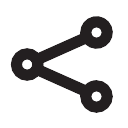
Rocky Road Realities: My Top 10 Missteps While Camping in the Canadian Rockies
- Adventure
- Travel Guides
Share this


Share Links
Check out this travel tip from Jack`s Flight Club
https://jacksflightclub.com/travel-hub/undefined
 Copy link to post
Copy link to post Email
Email WhatsApp
WhatsApp Facebook
Facebook Twitter
Twitter

Kristi is a born and bred Canadian, who is on a break from her beloved mountains while she travels the world as a digital nomad. When she isn't travelling, she is writing about travelling, or dreaming about travelling, or saving up for...you get the point :-)






